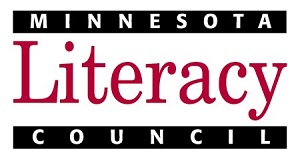- MN ABE Connect
- Archive
- Volunteer Contributions to “Minnesota’s ABE Miracle”
Volunteer Contributions to “Minnesota’s ABE Miracle”
Cathy Grady, Literacy Services DirectorDuring his annual state update, ABE Director Todd Wagner included the integration of volunteers as a key component of what he called “Minnesota’s ABE Miracle,” that magic combination of factors that make our system so effective. At the Minnesota Literacy Council, we are very thankful that our state leadership values the contributions volunteers make to ABE and supports volunteer training and recruitment. We are also continually impressed by the excellent support that professionals like you provide to volunteers. Sixty-seven ABE programs recently completed reports covering volunteer service at 129 learning sites across the state. A full report will be available on the Minnesota Literacy Council website soon.
In the meantime, here is a glimpse at the 2015-16 volunteer data.
- Last program year, 3181 volunteers contributed 173,624 hours of their time working with 26,313 students. While the number of volunteers is down slightly from the 2014-15 program year, the number of students served by these volunteers is up. Forty percent – or more than one in three – of all ABE students in Minnesota worked with a volunteer last year (26,313 of the 65,683 total ABE enrollees worked with a volunteer).
- Using the Independent Sector’s calculation for the value of a volunteer hour, the amount of time volunteers contributed to ABE translates to nearly $4.4 million, a figure that almost matches the $5 million Minnesota received in total federal funding for ABE last year.
- About two-thirds of volunteers (66%) worked with English language learners, with the other third split between ABE (14%), GED (6%) and administrative tasks (7%). Volunteer service was pretty evenly split between working as a classroom assistant with a professional teacher, leading a small group of students, and tutoring students one-to-one.
- Nearly 100% of programs reported that volunteers were effective in serving learners.
Boomers, Millennials and More: what to expect in the years ahead
 The decline in ABE volunteers mirrors a slight downward trend in Minnesota volunteerism in general, according to the Minnesota Association for Volunteer Administration (MAVA) and Minnesota Compass. MAVA points to higher employment rates and a declining number of older-generation volunteers as reasons for this decline. Older, “traditionalist” volunteers have generally been the most long-term, stable group of volunteers serving in schools and nonprofit organizations.
The decline in ABE volunteers mirrors a slight downward trend in Minnesota volunteerism in general, according to the Minnesota Association for Volunteer Administration (MAVA) and Minnesota Compass. MAVA points to higher employment rates and a declining number of older-generation volunteers as reasons for this decline. Older, “traditionalist” volunteers have generally been the most long-term, stable group of volunteers serving in schools and nonprofit organizations.
Following are other emerging trends in the volunteer sector, as reported by MAVA, and how they may apply to ABE.
- There is continuing demand for short-term volunteer opportunities. Although short-term volunteering is generally not ideal for most ABE programs, coordinators and managers are getting creative and engaging these volunteers in ways that give them a sense of the program and students. Sometimes these short-timers enjoy their work so much they end up staying much longer.
- Corporate-sponsored volunteerism is growing. Many ABE programs already have connections with local companies and can build on these relationships to engage more volunteers. Programs that don’t have existing connections should think about contacting the community engagement staff at nearby corporations to learn about ways they can promote their program to employees.
- There is increasing representation of immigrant groups in Minnesota’s volunteer pool. This is great news for ABE programs who have been trying to diversify their volunteer base to better reflect the diversity in their classrooms. Try recruiting volunteers from diverse communities by asking for assistance from your higher-level English language learners and reaching out to ethnic media and organizations.
- Millennials are volunteering in record numbers. To find these young volunteers, ABE programs can connect with local colleges, use social media, and engage existing young volunteers in recruiting within their networks.
- Minnesota is aging fast. By 2030, the number of 65-79 year-olds will be double what it was in 2010. Hopefully, this will mean larger numbers of retired or semi-retired people who have time to volunteer in ABE.
For more volunteer management resources, go to the Minnesota Literacy Council website.
For more information about Minnesota’s volunteer trends, see MAVA’s website.

Newsletter Signup
Get MN ABE Connect—the official source for ABE events, activities, and resources!
Sign UpArticle Categories
- ABE Foundations/Staff Onboarding
- ACES/Transitions
- Adult Career Pathways
- Assessment
- CCR Standards
- Citizenship
- COVID-19
- Cultural Competency
- Digital Literacy/Northstar
- Disabilities
- Distance Learning/Education
- ELA
- Equity/Inclusion
- ESL
- HSE/Adult Diploma
- Listening
- Math/Numeracy
- Mental Health
- Minnesota ABE
- One-Room Schoolhouse/Multilevel
- Professional Development
- Program Management
- Reading
- Remote Instruction
- Science
- Social Studies
- Speaking/Conversation
- Support Services
- Teaching Strategies
- Technology
- Uncategorized
- Volunteers/Tutors
- Writing